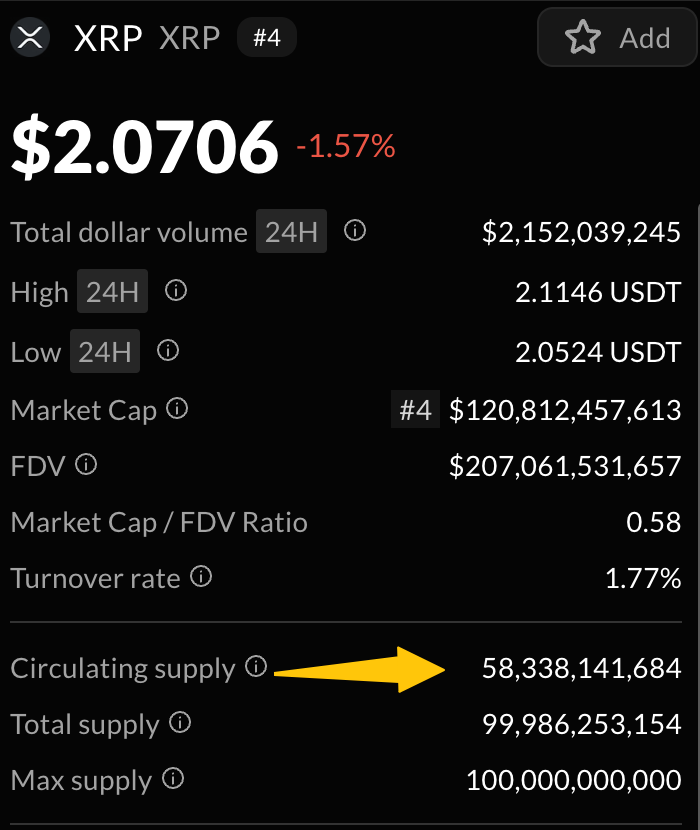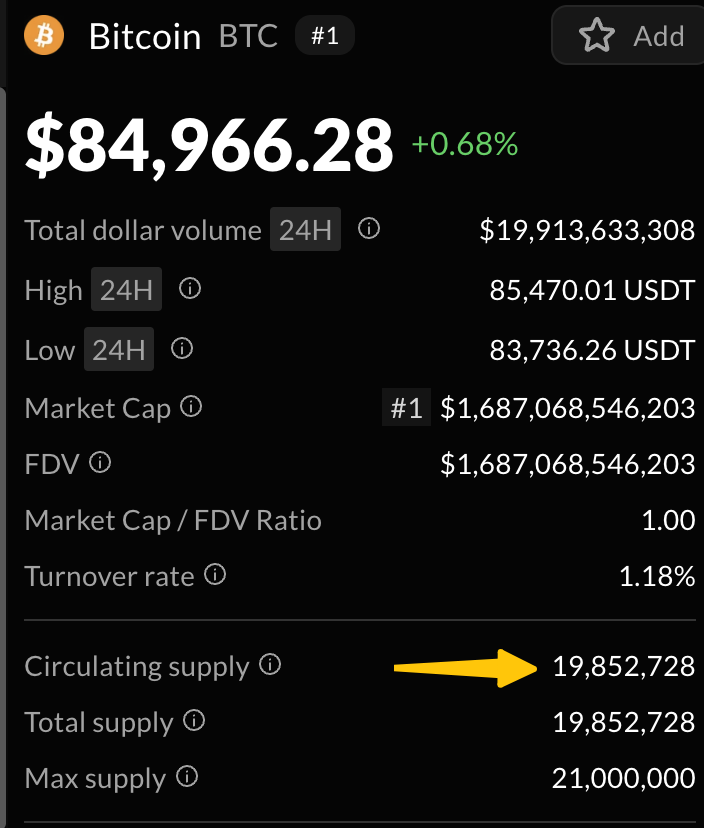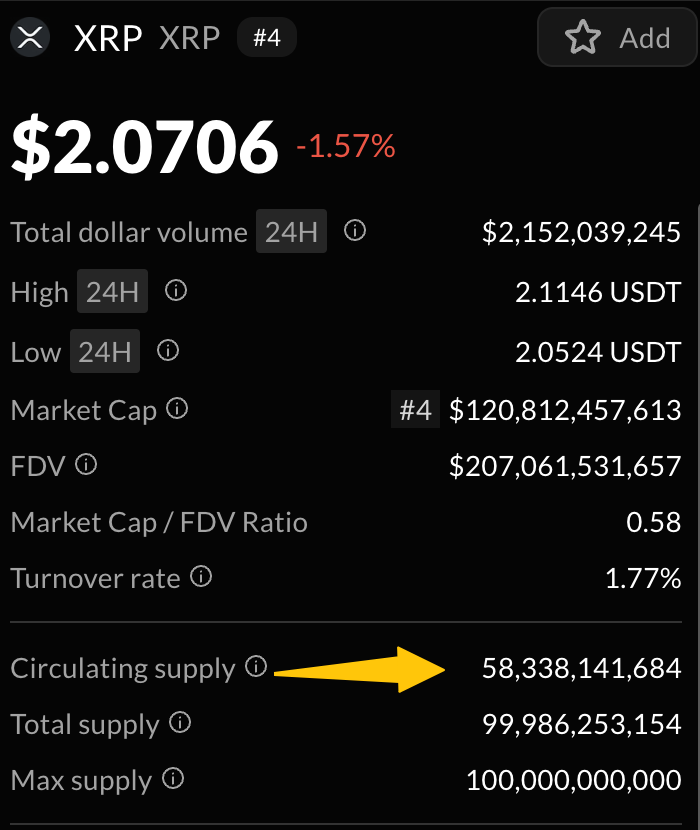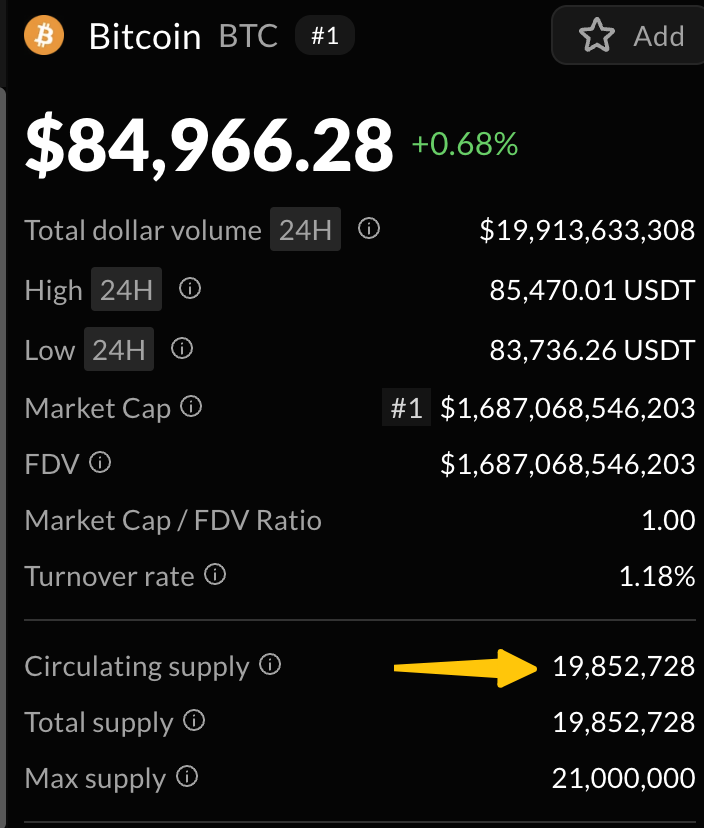
XRP vs. BTC in 2025: Detailed Comparison and Long-Term Potential
Bitcoin (BTC) and XRP are two of the longest-standing cryptocurrencies, each with over a decade of history. Bitcoin, launched in 2009, pioneered decentralized digital money and today is regarded as “digital gold” – a store of value and hedge asset. XRP, created in 2012 by Ripple Labs, was designed as a fast bridge currency for cross-border payments, aiming to improve on Bitcoin’s transaction speed and cost.
In 2025, both assets remain highly relevant but play very different roles. Bitcoin reached new all-time highs in late 2024 (around $100,000) as the first spot BTC ETFs were approved and institutional adoption surged. Meanwhile, XRP announced a settlement with the SEC recently, proceeding to the end of the long battle with it, removing a major regulatory cloud. And may even become the third cryptocurrency with list spot ETF trade on the public market.
Against this backdrop, it’s timely to compare XRP vs. Bitcoin in 2025 across their visions, technical designs, market performance, and outlook. The following analysis examines how these two leading cryptocurrencies differ and what the future may hold for each.
Key Takeaways
XRP regained U.S. exchange access after the SEC case, targets $4–$7 for 2025 (up to $10 if bank volume and a spot ETF arrive), and settles transfers in 3–5 s with sub‑cent fees.
Bitcoin ended 2024 above $100 k; forecasts cluster at $120 k–$220 k for 2025, with seven‑figure estimates over the next decade as macro stress boosts demand for a hard‑capped asset.
Supply contrast: about 58 % of XRP is tradable versus 90 %+ of BTC; XRP needs expanding payment use to offset its larger float, while Bitcoin’s tight circulation reinforces scarcity.
Performance and tech: XRP’s ten‑fold jump arrived mainly in the past six months; Bitcoin climbed in multi‑year waves. XRP offers rapid, low‑cost settlement; Bitcoin delivers unmatched security through Proof‑of‑Work, with Lightning adding speed when needed.
Choosing between them: Allocating to XRP backs a fast‑settlement network that could gain value as banks and fintechs scale usage, whereas allocating to Bitcoin backs a fixed‑supply reserve asset protected by the world’s most decentralized ledger and favored for long‑term value storage.
Key differences between XRP and BTC: Visions and Technical Designs
XRP was launched by Ripple Labs in 2012 with the specific goal of powering rapid, low‑cost cross‑border payments inside the global banking network. The XRP Ledger skips energy‑hungry mining and instead relies on a validator consensus system that confirms transactions in roughly 3–5 seconds, handling up to around 1,500 transactions per second. This design delivers near‑instant settlement at minimal cost, though it operates with a smaller, federated set of trusted nodes, so overall decentralization is lower than Bitcoin’s.
Bitcoin, released in 2009, set out to be a fully decentralized digital currency outside government control and is now widely described as “digital gold.” Its security rests on Proof‑of‑Work mining carried out by a worldwide network of miners and tens of thousands of full nodes, producing a public ledger that anyone can audit. The absence of any controlling entity maximizes censorship‑resistance, yet blocks arrive only every ≈10 minutes, limiting on‑chain throughput to about seven transactions per second.
In short, XRP prioritizes payment speed and cost‑efficiency, while Bitcoin prioritizes decentralization and security. To illustrate the fundamental differences, the table below summarizes key attributes of XRP vs. Bitcoin:
Attribute | XRP | Bitcoin |
Launch Year | 2012 (Ripple Labs) | 2009 (pseudonymous creator Satoshi Nakamoto) |
Consensus Mechanism | Federated Consensus (validators, no mining) | Proof-of-Work (miners solving SHA-256) |
Typical Settlement Time | ~3–5 seconds per ledger | ~10 minutes per block (average) |
Supply Cap | 100 billion XRP (fixed, pre-mined) | 21 million BTC (fixed) |
Circulating Supply | ~58 billion XRP (~42% in escrow) | ~19.8 million BTC (~93% of max) |
Primary Use Case | Bridge currency for payments/remittances (“digital cash for banks”) | Store of value & settlement asset (“digital gold”) |
XRP vs. BTC: Price Outlook and Long-Term Potential
XRP could multiply if Ripple’s rails win sustained bank volume, and combine with listed Spot ETF this year; targets cluster at $4–$7, with $10 reserved for a breakout in institutional settlement.
Bitcoin already enjoys the store‑of‑value narrative. Mainstream forecasts span $120 k–$220 k for 2025, while long‑term bulls point to the seven‑figure range as fiat trust erodes and adoption snowballs.
Both assets face volatility, yet each addresses a different market need: XRP seeks payment utility (also key indicator for XRP), Bitcoin serves as digital hard money.
Difference between XRP and BTC in Supply
The biggest difference between XRP and Bitcoin in supply isn’t the headline cap but the share already circulating; Bitcoin’s circulation ratio is much higher.
XRP began with a fixed 100 billion tokens, all created at launch. Roughly 58 billion XRP(58%) are circulating at the moment, while the remainder sits in escrow accounts that unlock on a preset monthly schedule.

Bitcoin, by contrast, has a hard cap of 21 million BTC and issues new coins only through Proof‑of‑Work mining. The block reward halves every four years, slowing new supply. By April 2025 about 19.8 million BTC—more than 90 % of the total—are already in circulation, leaving fewer than two million still to be mined over the next century.

XRP vs. BTC: Consensus Algorithm
XRP relies on a validator‑based consensus algorithm with no mining. A few dozen nodes—run by banks, exchanges, universities, Ripple, and community members—circulate proposals and must reach about 80 % agreement before a ledger version is finalized. The result is confirmation in roughly 3–5 seconds with minimal energy use. The downside is a smaller, trusted validator set; honest behavior by that group is essential, so observers often describe the network as more centralized than Bitcoin.
Bitcoin secures its ledger through Proof‑of‑Work mining. Thousands of miners worldwide compete to solve cryptographic puzzles, and the chain with the most accumulated work becomes authoritative. This delivers very high security and decentralization—rewriting history would require controlling most of the global hash rate, an impractical feat. Bitcoin’s ledger has remained intact for over 14 years, but the approach consumes significant electricity and specialized hardware.
XRP vs. BTC: Performance Over the Past 5 Years
Over the five years to early 2025, XRP and Bitcoin (BTC) each posted an approximate 10× gain, but the timelines were very different. XRP lingered below its January 2018 peak for most of the period and only broke out after mid‑2024, when its courtroom success erased regulatory doubts. As a result, nearly all of XRP’s five‑year return arrived in the final six months. Bitcoin, by contrast, advanced in stages—first during the 2021 bull run and again after spot‑ETF approval in 2024—reaching new highs on both occasions. In short, Bitcoin’s climb was gradual and well‑spaced, while XRP’s gain was compressed into a late‑cycle surge.
Difference between XRP and BTC in Security
XRP secures its ledger through a limited validator set—only a few dozen nodes—that reach agreement on each new block. The ledger has never suffered a successful attack, yet its smaller validator count makes fault tolerance lower than Bitcoin’s. A coordinated group of dishonest validators could, in theory, disrupt confirmations more easily than an attacker could alter Bitcoin. Ripple and community operators have expanded the validator roster, and no single entity holds a majority as of 2025, improving resilience but not matching Bitcoin’s scale.
Bitcoin relies on massive global hash power and tens of thousands of nodes. Over more than 14 years of continuous operation, the chain has never been compromised. Any attempt to rewrite history would require acquiring a majority of worldwide mining capacity—an effort so costly that it is considered practically impossible. Thanks to this unparalleled computational defense and wide node distribution, Bitcoin remains the more secure and decentralized network when compared with XRP.
XRP vs. BTC: Transaction Speed & Fees
XRP settles payments in roughly 3–5 seconds and can process about 1,500 transactions per second. Fees are tiny—often a fraction of a cent— so cost is practically irrelevant even for heavy traffic.
Bitcoin’s base layer handles around 5–7 transactions per second, with each transfer waiting ≈10 minutes for block inclusion. Fees swing with demand: a few cents when blocks are quiet, several dollars when they fill up. This throughput and cost profile limits Bitcoin’s suitability for small, time‑sensitive payments. The Lightning Network speeds things up off‑chain and cuts costs, but it requires extra channel management and liquidity.
XRP vs. BTC: Earning
Neither XR nor Bitcoin offers built-in yield (no staking rewards or interest through the protocol). Bitcoin, being proof-of-work, means as a reward for mining blocks – regular BTC holders do not earn passive crypto rewards by default. XRP likewise has no native reward mechanism for holding or validating. In both cases, long-term investors depend on the asset’s value increasing over time rather than any form of interest or dividends (or yield).
That said, external opportunities (3rd parties) exist to earn a return on both assets, though they come with added risk. Bitcoin holders can lend out their BTC on exchanges or custodial platforms, or use wrapped BTC in decentralized finance, to earn interest. Advanced users might also run Lightning Network nodes to collect small fees for routing payments. Similarly, XRP holders can lend XRP or provide liquidity on the XRP Ledger’s decentralized exchange (now enhanced with an Automated Market Maker feature) to earn fees. These are optional, off-protocol activities. Generally, most people holding BTC or XRP are seeking capital gains (price appreciation) over time, rather than relying on yield from the protocol itself.
XRP vs. BTC: Adoption and Community Support
XRP adoption centers on the payments and banking sector. By 2025, partnerships with financial institutions have XRP settling transfer flows in select remittance and bank corridors, cutting costs and wait times. The token’s earlier U.S. legal dispute—now resolved in Ripple’s favor—had slowed domestic uptake; with clarity established, major exchanges have relisted XRP, and additional banks are trialing it. Though smaller than Bitcoin’s (but still, bigger than most of altercoins'), the “XRP Army” community is highly active, promoting the asset’s role in enterprise finance and supporting technical upgrades on the XRP Ledger.
Bitcoin enjoys global reach across retail holders, corporations, and investment funds. Multiple spot‑BTC ETFs trade on major exchanges, and large banks provide custody and brokerage services. Bitcoin is accepted on numerous payment and trading platforms, while its developer community advances projects such as the Lightning Network to expand functionality. This broad footprint makes Bitcoin nearly synonymous with cryptocurrency in mainstream perception, backed by a vast network of enthusiasts and builders who continue to refine the protocol.
XRP or BTC: Which one is better?
Ultimately, Bitcoin and XRP serve different purposes, so the question of which is “better” depends on what criteria one values. Bitcoin offers unmatched decentralization, security, and a proven track record as a store of value. It’s the cryptocurrency most institutions trust and is often seen as the safer long-term bet. XRP, by contrast, excels at fast and cheap transactions, making it better suited for payment flows and banking use cases. XRP could see significant upside if it becomes widely used in international finance, but it also carries more uncertainty since that adoption is not guaranteed.
For a long-term store-of-value or “digital gold” investment, Bitcoin is the clear choice. For quick, efficient transfers or a speculative bet on fintech adoption, XRP holds more appeal. Rather than one being universally better, each is better in its own domain. Bitcoin will likely remain the dominant crypto asset overall, while XRP’s future value will hinge on how effectively it can fulfill its specialized role in global payments.

XRP vs. BTC in 2025: Detailed Comparison and Long-Term Potential
Bitcoin (BTC) and XRP are two of the longest-standing cryptocurrencies, each with over a decade of history. Bitcoin, launched in 2009, pioneered decentralized digital money and today is regarded as “digital gold” – a store of value and hedge asset. XRP, created in 2012 by Ripple Labs, was designed as a fast bridge currency for cross-border payments, aiming to improve on Bitcoin’s transaction speed and cost.
In 2025, both assets remain highly relevant but play very different roles. Bitcoin reached new all-time highs in late 2024 (around $100,000) as the first spot BTC ETFs were approved and institutional adoption surged. Meanwhile, XRP announced a settlement with the SEC recently, proceeding to the end of the long battle with it, removing a major regulatory cloud. And may even become the third cryptocurrency with list spot ETF trade on the public market.
Against this backdrop, it’s timely to compare XRP vs. Bitcoin in 2025 across their visions, technical designs, market performance, and outlook. The following analysis examines how these two leading cryptocurrencies differ and what the future may hold for each.
Key Takeaways
XRP regained U.S. exchange access after the SEC case, targets $4–$7 for 2025 (up to $10 if bank volume and a spot ETF arrive), and settles transfers in 3–5 s with sub‑cent fees.
Bitcoin ended 2024 above $100 k; forecasts cluster at $120 k–$220 k for 2025, with seven‑figure estimates over the next decade as macro stress boosts demand for a hard‑capped asset.
Supply contrast: about 58 % of XRP is tradable versus 90 %+ of BTC; XRP needs expanding payment use to offset its larger float, while Bitcoin’s tight circulation reinforces scarcity.
Performance and tech: XRP’s ten‑fold jump arrived mainly in the past six months; Bitcoin climbed in multi‑year waves. XRP offers rapid, low‑cost settlement; Bitcoin delivers unmatched security through Proof‑of‑Work, with Lightning adding speed when needed.
Choosing between them: Allocating to XRP backs a fast‑settlement network that could gain value as banks and fintechs scale usage, whereas allocating to Bitcoin backs a fixed‑supply reserve asset protected by the world’s most decentralized ledger and favored for long‑term value storage.
Key differences between XRP and BTC: Visions and Technical Designs
XRP was launched by Ripple Labs in 2012 with the specific goal of powering rapid, low‑cost cross‑border payments inside the global banking network. The XRP Ledger skips energy‑hungry mining and instead relies on a validator consensus system that confirms transactions in roughly 3–5 seconds, handling up to around 1,500 transactions per second. This design delivers near‑instant settlement at minimal cost, though it operates with a smaller, federated set of trusted nodes, so overall decentralization is lower than Bitcoin’s.
Bitcoin, released in 2009, set out to be a fully decentralized digital currency outside government control and is now widely described as “digital gold.” Its security rests on Proof‑of‑Work mining carried out by a worldwide network of miners and tens of thousands of full nodes, producing a public ledger that anyone can audit. The absence of any controlling entity maximizes censorship‑resistance, yet blocks arrive only every ≈10 minutes, limiting on‑chain throughput to about seven transactions per second.
In short, XRP prioritizes payment speed and cost‑efficiency, while Bitcoin prioritizes decentralization and security. To illustrate the fundamental differences, the table below summarizes key attributes of XRP vs. Bitcoin:
Attribute | XRP | Bitcoin |
Launch Year | 2012 (Ripple Labs) | 2009 (pseudonymous creator Satoshi Nakamoto) |
Consensus Mechanism | Federated Consensus (validators, no mining) | Proof-of-Work (miners solving SHA-256) |
Typical Settlement Time | ~3–5 seconds per ledger | ~10 minutes per block (average) |
Supply Cap | 100 billion XRP (fixed, pre-mined) | 21 million BTC (fixed) |
Circulating Supply | ~58 billion XRP (~42% in escrow) | ~19.8 million BTC (~93% of max) |
Primary Use Case | Bridge currency for payments/remittances (“digital cash for banks”) | Store of value & settlement asset (“digital gold”) |
XRP vs. BTC: Price Outlook and Long-Term Potential
XRP could multiply if Ripple’s rails win sustained bank volume, and combine with listed Spot ETF this year; targets cluster at $4–$7, with $10 reserved for a breakout in institutional settlement.
Bitcoin already enjoys the store‑of‑value narrative. Mainstream forecasts span $120 k–$220 k for 2025, while long‑term bulls point to the seven‑figure range as fiat trust erodes and adoption snowballs.
Both assets face volatility, yet each addresses a different market need: XRP seeks payment utility (also key indicator for XRP), Bitcoin serves as digital hard money.
Difference between XRP and BTC in Supply
The biggest difference between XRP and Bitcoin in supply isn’t the headline cap but the share already circulating; Bitcoin’s circulation ratio is much higher.
XRP began with a fixed 100 billion tokens, all created at launch. Roughly 58 billion XRP(58%) are circulating at the moment, while the remainder sits in escrow accounts that unlock on a preset monthly schedule.

Bitcoin, by contrast, has a hard cap of 21 million BTC and issues new coins only through Proof‑of‑Work mining. The block reward halves every four years, slowing new supply. By April 2025 about 19.8 million BTC—more than 90 % of the total—are already in circulation, leaving fewer than two million still to be mined over the next century.

XRP vs. BTC: Consensus Algorithm
XRP relies on a validator‑based consensus algorithm with no mining. A few dozen nodes—run by banks, exchanges, universities, Ripple, and community members—circulate proposals and must reach about 80 % agreement before a ledger version is finalized. The result is confirmation in roughly 3–5 seconds with minimal energy use. The downside is a smaller, trusted validator set; honest behavior by that group is essential, so observers often describe the network as more centralized than Bitcoin.
Bitcoin secures its ledger through Proof‑of‑Work mining. Thousands of miners worldwide compete to solve cryptographic puzzles, and the chain with the most accumulated work becomes authoritative. This delivers very high security and decentralization—rewriting history would require controlling most of the global hash rate, an impractical feat. Bitcoin’s ledger has remained intact for over 14 years, but the approach consumes significant electricity and specialized hardware.
XRP vs. BTC: Performance Over the Past 5 Years
Over the five years to early 2025, XRP and Bitcoin (BTC) each posted an approximate 10× gain, but the timelines were very different. XRP lingered below its January 2018 peak for most of the period and only broke out after mid‑2024, when its courtroom success erased regulatory doubts. As a result, nearly all of XRP’s five‑year return arrived in the final six months. Bitcoin, by contrast, advanced in stages—first during the 2021 bull run and again after spot‑ETF approval in 2024—reaching new highs on both occasions. In short, Bitcoin’s climb was gradual and well‑spaced, while XRP’s gain was compressed into a late‑cycle surge.
Difference between XRP and BTC in Security
XRP secures its ledger through a limited validator set—only a few dozen nodes—that reach agreement on each new block. The ledger has never suffered a successful attack, yet its smaller validator count makes fault tolerance lower than Bitcoin’s. A coordinated group of dishonest validators could, in theory, disrupt confirmations more easily than an attacker could alter Bitcoin. Ripple and community operators have expanded the validator roster, and no single entity holds a majority as of 2025, improving resilience but not matching Bitcoin’s scale.
Bitcoin relies on massive global hash power and tens of thousands of nodes. Over more than 14 years of continuous operation, the chain has never been compromised. Any attempt to rewrite history would require acquiring a majority of worldwide mining capacity—an effort so costly that it is considered practically impossible. Thanks to this unparalleled computational defense and wide node distribution, Bitcoin remains the more secure and decentralized network when compared with XRP.
XRP vs. BTC: Transaction Speed & Fees
XRP settles payments in roughly 3–5 seconds and can process about 1,500 transactions per second. Fees are tiny—often a fraction of a cent— so cost is practically irrelevant even for heavy traffic.
Bitcoin’s base layer handles around 5–7 transactions per second, with each transfer waiting ≈10 minutes for block inclusion. Fees swing with demand: a few cents when blocks are quiet, several dollars when they fill up. This throughput and cost profile limits Bitcoin’s suitability for small, time‑sensitive payments. The Lightning Network speeds things up off‑chain and cuts costs, but it requires extra channel management and liquidity.
XRP vs. BTC: Earning
Neither XR nor Bitcoin offers built-in yield (no staking rewards or interest through the protocol). Bitcoin, being proof-of-work, means as a reward for mining blocks – regular BTC holders do not earn passive crypto rewards by default. XRP likewise has no native reward mechanism for holding or validating. In both cases, long-term investors depend on the asset’s value increasing over time rather than any form of interest or dividends (or yield).
That said, external opportunities (3rd parties) exist to earn a return on both assets, though they come with added risk. Bitcoin holders can lend out their BTC on exchanges or custodial platforms, or use wrapped BTC in decentralized finance, to earn interest. Advanced users might also run Lightning Network nodes to collect small fees for routing payments. Similarly, XRP holders can lend XRP or provide liquidity on the XRP Ledger’s decentralized exchange (now enhanced with an Automated Market Maker feature) to earn fees. These are optional, off-protocol activities. Generally, most people holding BTC or XRP are seeking capital gains (price appreciation) over time, rather than relying on yield from the protocol itself.
XRP vs. BTC: Adoption and Community Support
XRP adoption centers on the payments and banking sector. By 2025, partnerships with financial institutions have XRP settling transfer flows in select remittance and bank corridors, cutting costs and wait times. The token’s earlier U.S. legal dispute—now resolved in Ripple’s favor—had slowed domestic uptake; with clarity established, major exchanges have relisted XRP, and additional banks are trialing it. Though smaller than Bitcoin’s (but still, bigger than most of altercoins'), the “XRP Army” community is highly active, promoting the asset’s role in enterprise finance and supporting technical upgrades on the XRP Ledger.
Bitcoin enjoys global reach across retail holders, corporations, and investment funds. Multiple spot‑BTC ETFs trade on major exchanges, and large banks provide custody and brokerage services. Bitcoin is accepted on numerous payment and trading platforms, while its developer community advances projects such as the Lightning Network to expand functionality. This broad footprint makes Bitcoin nearly synonymous with cryptocurrency in mainstream perception, backed by a vast network of enthusiasts and builders who continue to refine the protocol.
XRP or BTC: Which one is better?
Ultimately, Bitcoin and XRP serve different purposes, so the question of which is “better” depends on what criteria one values. Bitcoin offers unmatched decentralization, security, and a proven track record as a store of value. It’s the cryptocurrency most institutions trust and is often seen as the safer long-term bet. XRP, by contrast, excels at fast and cheap transactions, making it better suited for payment flows and banking use cases. XRP could see significant upside if it becomes widely used in international finance, but it also carries more uncertainty since that adoption is not guaranteed.
For a long-term store-of-value or “digital gold” investment, Bitcoin is the clear choice. For quick, efficient transfers or a speculative bet on fintech adoption, XRP holds more appeal. Rather than one being universally better, each is better in its own domain. Bitcoin will likely remain the dominant crypto asset overall, while XRP’s future value will hinge on how effectively it can fulfill its specialized role in global payments.
 00:00
00:00